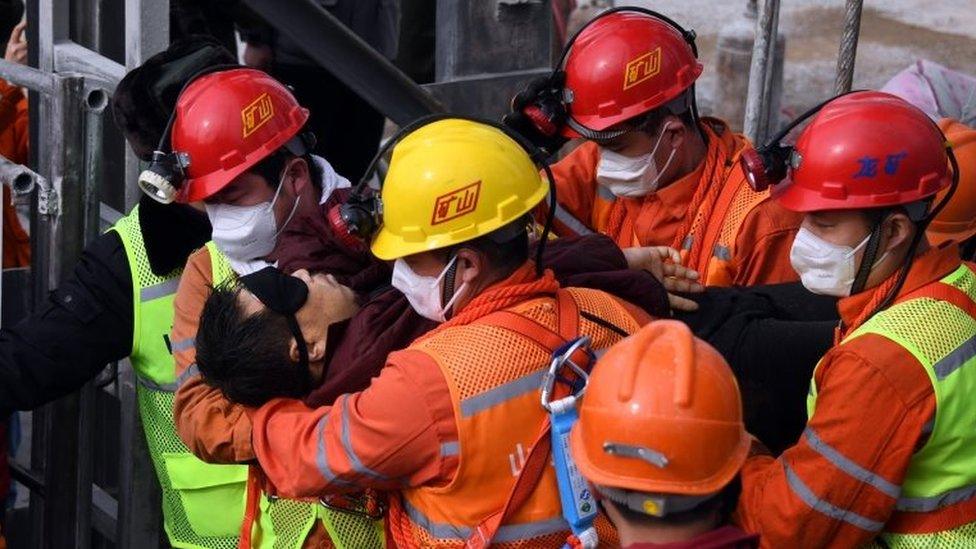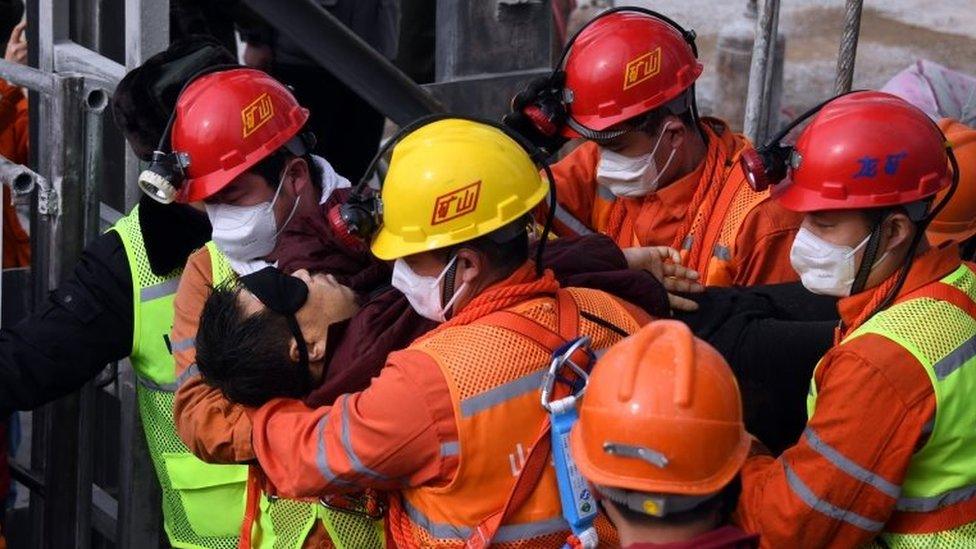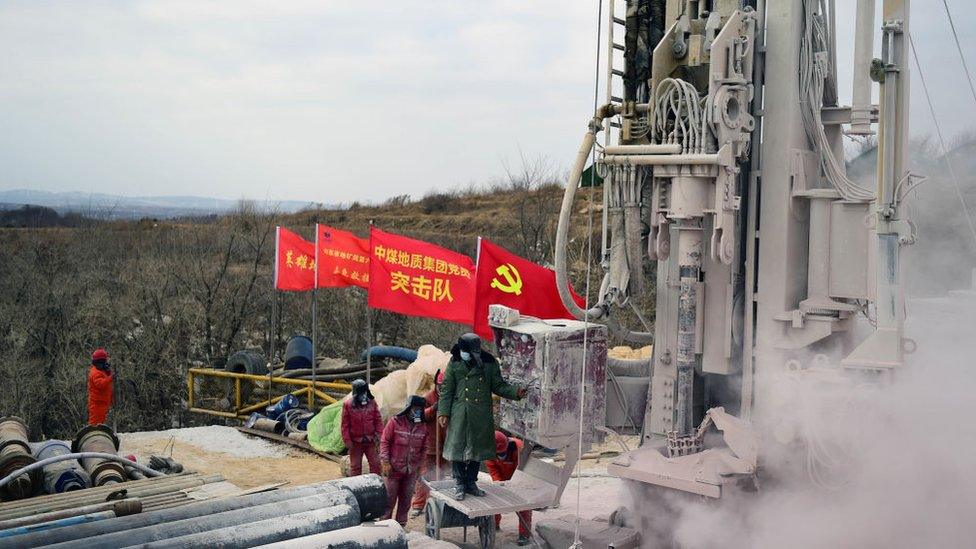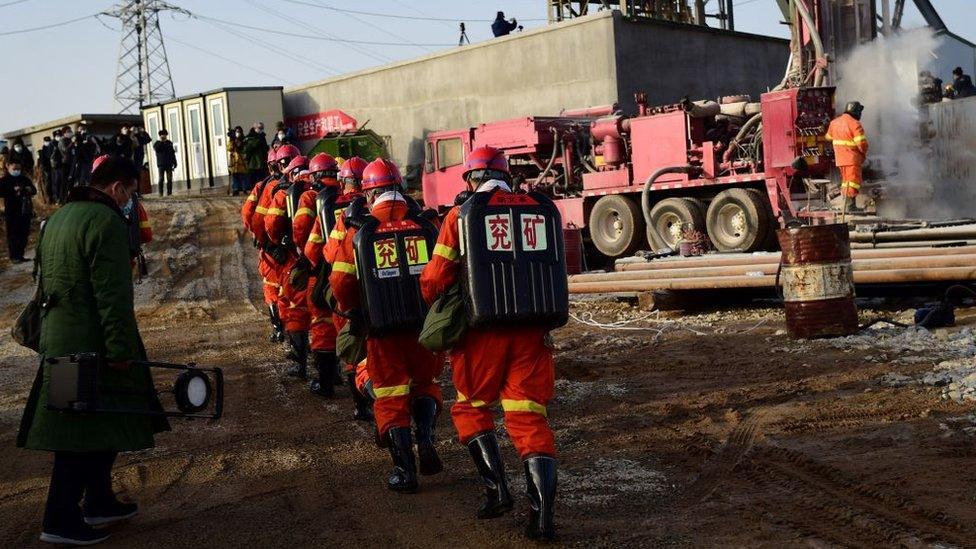China mine rescue: Nine found dead during rescue in Shandong province
- Published
TV footage from China showed the first miner being brought to the surface after two weeks underground
Nine Chinese miners have been found dead a day after 11 of their colleagues were rescued after two weeks trapped in a gold mine in Shandong province.
The Yantai city mayor confirmed the deaths, state broadcaster CCTV said. One miner remains missing. Another died last week after falling into a coma.
The miners became trapped in the Hushan mine when the entrance to the tunnel collapsed after a blast on 10 January.
There was joy on Sunday after the 11 were brought to the surface.
"From Sunday afternoon to this afternoon, rescue workers have not stopped searching, and found a further nine trapped miners who unfortunately all died," Yantai Mayor Chen Fei told a briefing on Monday.
"Along with one miner who died on Thursday, the bodies of the nine deceased miners were all lifted out of the mine."
How did rescuers reach the miners?
Rescue efforts had been expected to take weeks, but took a "big step forwards" on Sunday morning when "a huge obstacle blocking the well suddenly fell to the bottom of the shaft," lead rescue worker Du Bingjian told the state-run Global Times.

The surviving miners wore blindfolds to protect their eyes after spending two weeks in darkness
The first man to be rescued had been trapped in a different part of the gold mine to the main group of 10.
TV footage showed him being lifted out as emergency workers cheered. He was blindfolded to protect his eyes from the light and was immediately taken to hospital for treatment, with his condition described as "extremely weak".
About an hour after his rescue, 10 more miners were brought out from a different section of the mine. CCTV said one of them was injured.
Several others were seen walking by themselves, supported by rescue workers, before being transported to hospital.
The nine dead miners were believed to have been in the "Sixth Central Section" of the mine, but details of how they were located are not yet known.
How did the survivors cope?
The miners had been working 600m (2,000ft) beneath the surface when the unexplained explosion happened, severely damaging entry to the mine and cutting off communication.
For a week, there was no sign of life. Then, on 17 January, rescuers felt a pull on one of the ropes they were lowering into small shafts leading down into the dark.
A paper note was then sent up on a rope from a group of 12 surviving miners - 11 trapped in one place and a 12th trapped further below.
After that, the contact with the 12th miner was lost, while one of the group of 11, who had fallen into a coma after sustaining a head wound in the explosion, was confirmed dead on Thursday.
A communication line was established and food and medicine were lowered down through a narrow shaft.


The miners received porridge and nutritional liquids, and a few days before their rescue, requested a traditional meal of sausages.
Mining accidents are not uncommon in China, where the industry safety regulations can be poorly enforced. In December last year, 23 miners died after a carbon monoxide leak at a coal mine.
In September, 16 workers were killed at another mine on the outskirts of Chongqing, also due to carbon monoxide. In December 2019, an explosion at a coal mine in Guizhou province, south-west China, killed at least 14 people.
- Published24 January 2021

- Published22 January 2021

- Published20 January 2021

- Published18 January 2021
